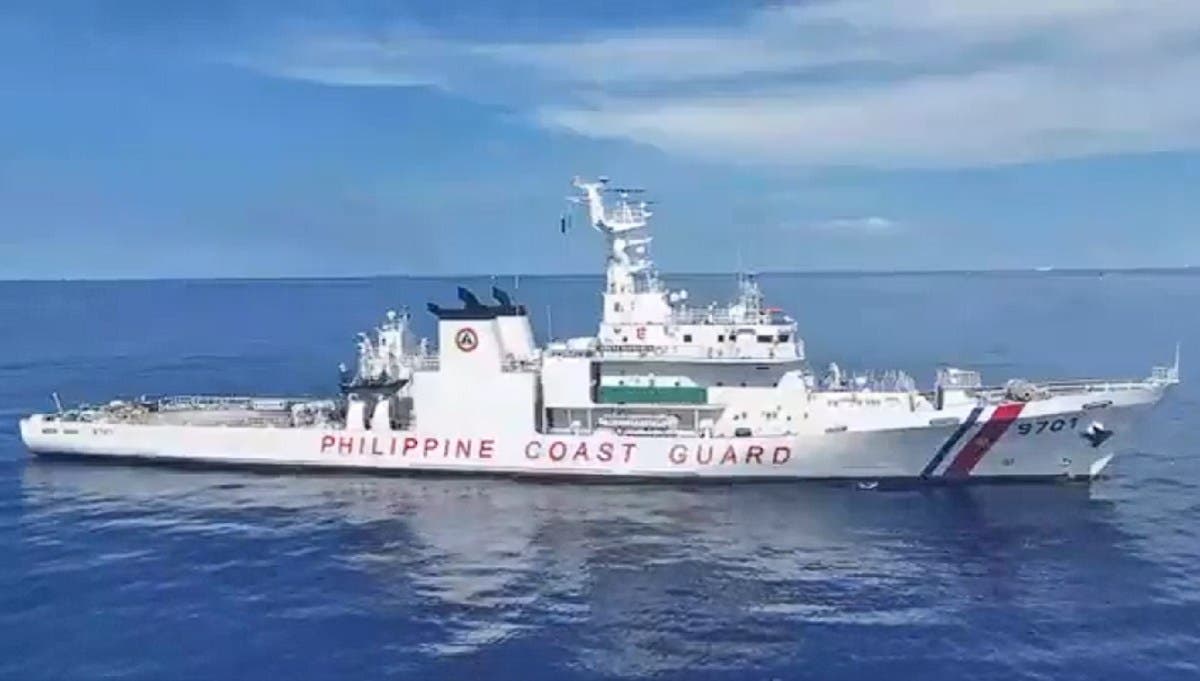UPDATE: China has deployed naval assets to obstruct a Philippine government supply mission near contested territories in the South China Sea, escalating tensions in the region. The Philippine Coast Guard confirmed that this dangerous confrontation occurred on October 13, 2025, as they attempted to deliver critical supplies to local fishermen.
Authorities report that around 10 Chinese coast guard vessels and an additional 10 ships from China’s maritime militia confronted the Philippine convoy near the disputed Sabina Shoal and Scarborough Shoal. These areas are vital for both nations, with Scarborough Shoal being a traditional fishing ground for Filipino and Chinese fishermen alike.
Philippine coast guard spokesperson Jay Tarriela described the encounters as “tense,” noting that Chinese vessels performed “dangerous maneuvers and blocking actions” that delayed the supply mission. Additionally, Chinese coast guard ships reportedly used water cannons to intimidate Filipino fishermen. Despite these aggressive actions, the Philippine mission succeeded in delivering supplies to almost 100 fishing vessels and facilitated the purchase of 30 tons of fresh fish.
The situation is rapidly developing as China continues to assert its claims over nearly the entirety of the South China Sea, a crucial maritime route responsible for around one-fifth of global trade. This assertion overlaps with claims from several neighboring countries, including the Philippines, a key U.S. ally. The ongoing pushback from Manila against China’s expanding influence has resulted in increasingly violent confrontations at sea.
Earlier today, a Chinese naval helicopter was reported tailing a Philippine Coast Guard plane during a maritime surveillance flight over Scarborough Shoal, further heightening tensions in the region.
Western analysts interpret this aggressive deployment of Chinese naval forces as a significant escalation. Historically, China has relied on its coast guard and maritime militia to assert its territorial claims with limited risk of conflict. However, recent clashes, including a reported collision between a Chinese navy destroyer and a coast guard ship, have raised alarms. Philippine officials believe this incident resulted in the deaths of at least two Chinese crew members, with both sides blaming one another for unsafe navigation.
The international ruling from an arbitral tribunal in 2016 largely sided with the Philippines, invalidating Beijing’s extensive claims over the South China Sea. Despite this, China continues to reject the ruling as illegitimate.
Admiral Ronnie Gil Gavan, head of the Philippine coast guard, emphasized the mission’s importance, stating, “My top priority is to safeguard [fishermen’s] livelihoods from any interference by the China Coast Guard.” He affirmed that they stand ready to defend the Philippines’ sovereign territory against external threats.
Li Guoqiang, a representative from the Chinese Academy of History, asserted China’s historical claim over Scarborough Shoal, insisting it has always been part of China and highlighting the country’s long-standing fishing activities in the area.
With both nations unwilling to compromise, the situation remains volatile. Observers are closely monitoring how prominently the Chinese navy will feature in future engagements, as tensions over these disputed waters continue to escalate. The potential for further confrontations looms large, with implications for regional stability and international maritime trade.
Stay tuned for more urgent updates as this situation develops.




































































